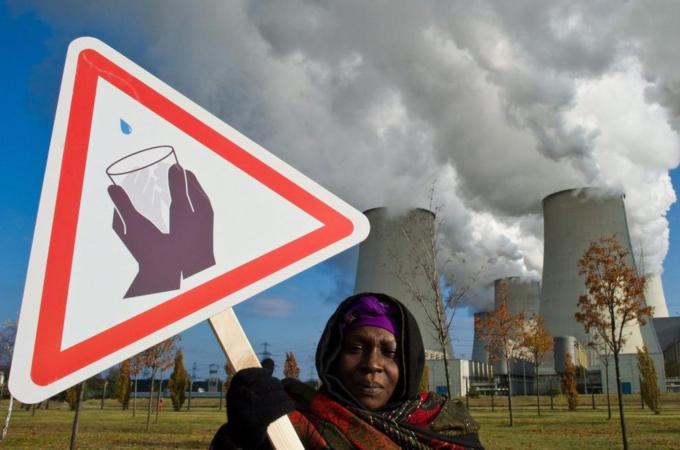The end of a psuedo-scientific illusion
“Debtgate”, like Saddam Hussein’s non-existent WMDs, is just one more example of that process in action.

Buried beneath the avalanche of attention to the Boston Marathon bombing, one of the most remarkable stories of the last few years reverberated through the economic community beginning on April 15. A 28-year-old graduate student, Thomas Herndon of the University of Massachusetts, had discovered three significant flaws – including a dunderheaded Excel coding error – in arguably the most influential economics paper of the last five years, “Growth in a time of debt“, by Carmen Reinhart and Kenneth Rogoff.
The flaws Herndon found essentially destroyed the paper’s main argument, that countries with debt-to-GDP ratios over 90 percent were at high risk of negative growth rates, thus making it urgent for most governments to slash spending, rather than worrying about mass unemployment, as countries have routinely done since the Great Depression in the 1930s.
In a paper co-written with two economics professors, “Does High Public Debt Consistently Stifle Economic Growth? A Critique of Reinhart and Rogoff“, Herndon showed that the finding was an illusion, that there was no statistically significant drop-off in growth, much less a sharp shift into negative territory. Hence, the traditional 20th century priority of putting people back to work through deficit spending makes perfect sense after all.
Serious objections to the Reinhart-Rogoff paper had been raised before – at best, they showed correlation, not causation, for example, and causation was arguably more likely to run in the opposite direction, from slow growth to high debt. (One indication can be seen here, in the form of two graphs, showing that high debt/GDP ratios are better “predictors” of the past five years, rather than the next five.)
But these objections were easily ignored by politicians already pre-disposed to embrace its political message: heed the concerns of the donor class, and let ordinary voters struggle increasingly on their own, since trying to help them would only make matters worse in the long run. This had been the philosophy of the Hoover administration, considered dead as a doornail for over 70 years, but when Barack Obama took office in early 2009 and Tea Party Republicanism erupted in response, suddenly that philosophy rose from the dead. Roughly one year later Reinhart-Rogoff seemed to provide it with a perfect rationale.
Austerian argument
As recently as late January, sparked by a contentious appearance on MSNBC’s Morning Joe programme, so-called “deficit hawks” or “austerians” tried to mount a smear campaign against Nobel Prize winning economist Paul Krugman, accusing him of being a “debt denier”, analogous to a global warming denier. (Joe Weisenthal blew this charade out of the water with a quickly pulled together list of notable economists across the political spectrum who agreed with Krugman, including conservative Bruce Bartlett.) But Herndon’s discovery turned the tables dramatically, removing the last remaining austerian argument after several years of such policies had plunged most of Europe back into recession.
 |
| Spotlight
Climate SOS
|
What’s more, Herndon’s discovery was eerily reminiscent of the so-called “Climategate” scandal of late 2009, except that “Climategate” itself was a hoax, while Herndon’s revelations really justify use of the term “Debtgate”. To briefly review, “Climategate” came about in the run-up to the Copenhagen Summit in late 2009, when global warming deniers claimed that emails stolen from the University of East Anglia discredited the science of global warming, showing it to be a hoax.
However, Media Matters quickly published a straightforward refutation of the leading false claims, both the American Geophysical Union and the American Association for the Advancement of Science issued statements reaffirming the basic soundlessness of climate change science, and nine separate investigations over the next several months all cleared the scientists involved of any deception or other unethical behaviour (excerpts and links to them can be found here.)
In striking contrast, Herndon’s work showed that a whole set of “Climategate” accusations were actually accurate when applied to Reinhart-Rogoff. Comparing “Climategate” with “Debtgate” we can see at least five main “Climategate” charges are actually true about “Debtgate” instead. These are:
1. The entire scientific enterprise has been discredited: The Reinhart-Rogoff paper stood alone, unlike the research discussed in the East Anglia emails. Whereas climate change was and is a well-established scientific phenomena, the evidence for which spread far beyond the scope of those whose emails were stolen, the 90 percent precipice that Reinhart and Rogoff claimed to find was not supported by any other research, and even they could not provide a plausible theoretical model to explain the data they mistakenly believed they had found.
Scientists sometimes use the term “numerology” in a special sense, to refer to seemingly scientific conjectures that lack foundations in terms of a causal model. Numerical patterns alone may lead to scientific hypothesis, but in themselves they are not science, they are numerology, hoping to become science. Now that serious errors have been founded in the Reinhart-Rogoff paper, it is clear that that is never going to happen for their 90 percent debt precipice.
2. Bad data had been badly manipulated behind the scenes: The claim was thoroughly debunked with respect to “Climategate”, but not “Debtgate”. Mike Konczal summarised as follows in the blog post that initially drew mass attention to Herndon’s work:
First, Reinhart and Rogoff selectively exclude years of high debt and average growth. Second, they use a debatable method to weight the countries. [Nineteen years of solid-growth UK data was given the same weight as one year of deep recession New Zealand data, for example.] Third, there also appears to be a coding error that excludes high-debt and average-growth countries. All three bias in favor of their result, and without them you don’t get their controversial result.
3. Bad data had been hidden from critics by failing to share it so that it could be checked: In “Climategate” follow-up investigations did criticise scientists for not sharing their data more freely, but there was no bad data and nothing nefarious being hidden, while there was also plenty of supporting data otherwise available. In contrast, as Mike Konczal notes, economist Dean Baker made an early request for data without success in 2010. I checked with Baker and he is still not aware of anyone other than Herndon who successfully requested data from Reinhart and Rogoff.
4. Disingenuous arguments were made which the data could not support: There was no bad data in “Climategate”, and no disingenuous arguments, either, as numerous review confirmed. But as Matthew O’Brien argued in the Atlantic – with examples – Reinhart and Rogoff “whisper ‘correlation’ to other economists, but say ‘causation’ to everyone else”. The real scientific question is precisely which way the causation goes, and by pretending they have settled it when they have not even tried, Reinhart and Rogoff are being deeply disingenuous.
5. Political pressure had been used to marginalise those who disagreed: I have already mentioned the attempt to smear Paul Krugman as a “debt denier”. For more on this see, here and here.
Individual-level projection
|
|
| Clues from the past on rising sea levels |
None of this is to say that Reinhart and Rogoff were acting maliciously in the manner that global warming deniers accused climate scientists of doing. Nor were they personally involved in political pressure to marginalise those who disagreed with them. But these caveats hardly matter in practical terms, in light of the pernicious impact of their work and their “true believer” mentality which so far has prevented them from admitting the actual import of their mistakes.
The parallels – or anti-parallels, if you will – are simply too striking to ignore. While the dominant Washington insider narrative is “both sides do it”, that there is a fundamental symmetry between the right and the left in American politics, the comparison between “Climategate” and “Debtgate” points to the exact opposite sort of dynamic, a profound asymmetry in which the things conservatives accuse liberals of are the things that they do themselves.
There is a well-known psychological term for this, it is known as “projection”, or, in layman’s terms, the pot calling the kettle black. America got to see a classic example of projection when House Republicans tried to impeach Bill Clinton for having an extramarital affair, and then screamed bloody murder Larry Flynt revealed that most of their top leaders were engaged in adulterous affairs of their own.
While individual-level projection represents the classic case described by psychiatrists and psychologists, we also see examples of projection where members of a group project onto other groups. In the case of “Climategate”, for example, we saw climate change deniers making wildly exaggerated, deceptive and dishonest claims that climate scientists were making wildly exaggerated, deceptive and dishonest claims. But even looser and more general groupings can function similarly, as can people who share a broader worldview, and that is what we see evidence of in this example.
The more abstract the group identity, the less obvious it may be, even to someone observing from a distance. That is what makes this example so interesting – the degree to which it illustrates projection in action is quite remarkable, and it flies directly in the face of the official “both sides do it” narrative.
A media which always insists that “both sides do it” may think of itself as neutral, unbiased or objective, but it is actually rigidly ideological. There are some ways in which it is true that “both sides do it”, and other ways in which it is not. It is the media’s job to look at what is actually going on and report on what it finds – not predetermine what it finds in advance.
By insisting that “both sides do it” and thus defining “the middle” as the privileged place of balance in which to be, the media has unwittingly made itself the stooge of those who consciously work to pull the centre farther and farther to the right, regardless of how untethered from reality they become in the process. “Debtgate”, like Saddam Hussein’s non-existent WMDs, is just one more example of that process in action.
Paul Rosenberg is a California-based writer, senior editor for Random Lengths News, where he’s worked since 2002. He’s also written for Publishers Weekly, Christian Science Monitor, LA Times, LA Weekly and Denver Post. In 2000/2001, he was a principal editor/writer at Indymedia LA. He was a front-page blogger at Open Left from 2007 to 2011.
Follow him on Twitter: @PaulHRosenberg
